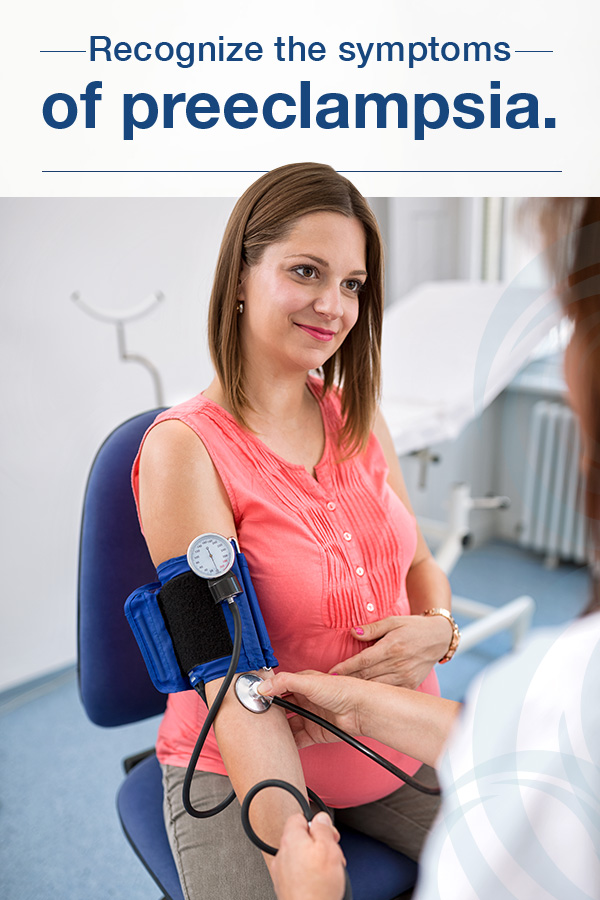Preeclampsia and eclampsia are part of the spectrum of high blood pressure, or hypertensive, disorders that can occur during pregnancy.
At the mild end of the spectrum is gestational hypertension, which occurs when a woman who previously had normal blood pressure develops high blood pressure when she is more than 20 weeks pregnant and her blood pressure returns to normal within 12 weeks after delivery. This problem usually occurs without other symptoms. In many cases, gestational hypertension does not harm the mother or fetus. Severe gestational hypertension, however, may be associated with preterm birth and infants who are small for their age at birth.1 Some women who have gestational hypertension later develop preeclampsia.2,3,4
Preeclampsia is similar to gestational hypertension because it also involves high blood pressure at or after 20 weeks of pregnancy in a woman whose blood pressure was normal before pregnancy. But preeclampsia can also include blood pressure at or greater than 140/90 mmHg, increased swelling, and protein in the urine.5,6 The condition can be serious and is a leading cause of preterm birth (before 37 weeks of pregnancy).7 If it is severe enough to affect brain function, causing seizures or coma, it is called eclampsia.
A serious complication of hypertensive disorders in pregnancy is HELLP syndrome, a situation in which a pregnant woman with preeclampsia or eclampsia suffers damage to the liver and blood cells. The letters in the name HELLP stand for the following problems:
- H - Hemolysis, in which oxygen-carrying red blood cells break down
- EL - Elevated Liver enzymes, showing damage to the liver
- LP - Low Platelet count, meaning that the cells responsible for stopping bleeding are low
Postpartum preeclampsia describes preeclampsia that develops after the baby is delivered, usually between 48 hours and 6 weeks after delivery.8 Symptoms can include high blood pressure, severe headache, visual changes, upper abdominal pain, and nausea or vomiting.5,6 Postpartum preeclampsia can occur regardless of whether a woman had high blood pressure or preeclampsia during pregnancy.9
Postpartum eclampsia refers to seizures that occur between 48 and 72 hours after delivery. Symptoms also include high blood pressure and difficulty breathing.5,6 About one-third of eclampsia cases occur after delivery, and nearly half of those are more than 48 hours after the birth.10
Postpartum preeclampsia and eclampsia can be serious and, if not treated quickly, may result in death.11 Visit the Preeclampsia Foundation website for more information: https://www.preeclampsia.org/stillatrisk .


 Possible symptoms of preeclampsia include:
Possible symptoms of preeclampsia include: BACK TO TOP
BACK TO TOP